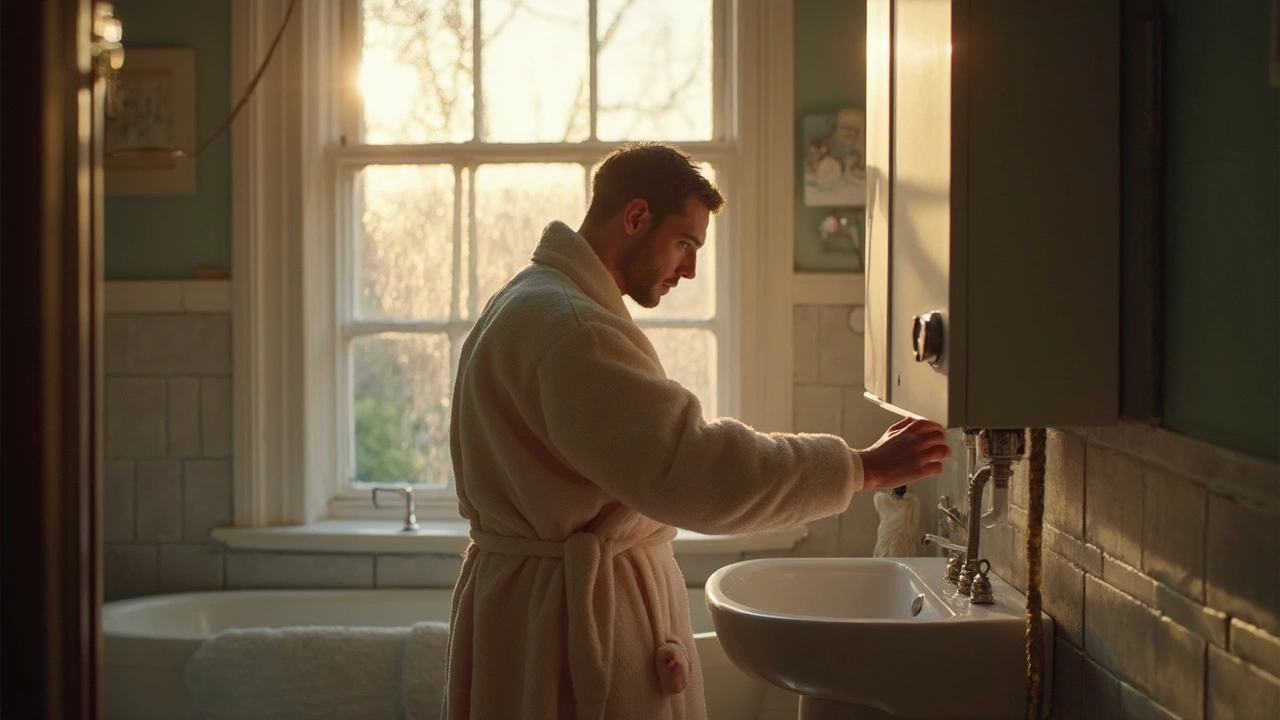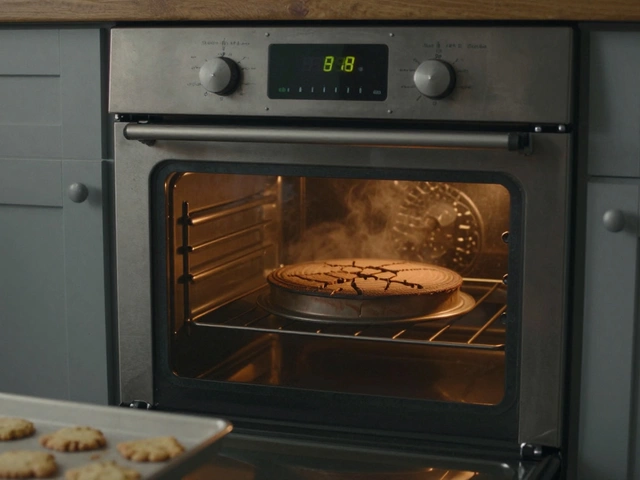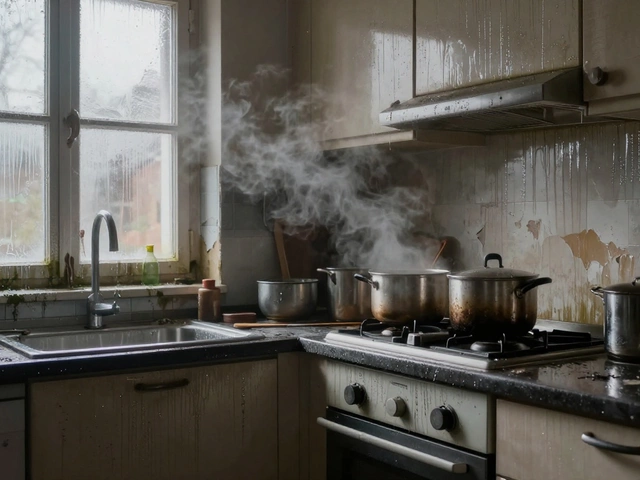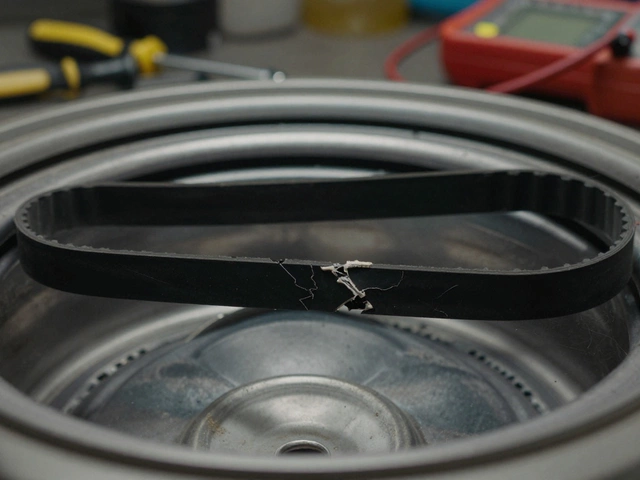Standing under an icy shower first thing in the morning feels like a cruel prank, right? The thing is, getting no hot water in your shower is usually a sign something simple has gone wrong. You don’t need to tear apart the bathroom or shell out big money on a plumber before trying a few quick checks yourself.
The top suspects are the water heater, a faulty mixing valve, or even a sneaky setting that got bumped. Sometimes, a clue is staring you right in the face—like if the rest of your house has hot water, but your shower’s freezing. That points you one way. If no tap gives you hot water at all, you’re likely looking at a water heater issue.
You don’t need to be a plumbing expert to narrow it down. In the next sections, I’ll walk you through how to pinpoint the issue, test things the easy way, and get your shower’s hot water flowing again. No complicated jargon, just straight-up advice you can use right now.
- Why Your Shower Has No Hot Water
- Quick DIY Checks and Fixes
- When the Problem Is the Water Heater
- When to Call in the Pros
Why Your Shower Has No Hot Water
If you suddenly have no hot water in the shower, it’s usually not some big mystery. There are a handful of usual suspects, and once you know them, you’re already halfway to a solution. Let’s run through what actually causes this problem so you can zero in on the fix.
First up, your water heater is king here. If it’s not heating water right—or at all—your showers go cold, plain and simple. This could be because:
- The pilot light on a gas heater is out.
- A circuit breaker for an electric heater has flipped.
- The thermostat is set too low or is faulty.
- Sediment buildup in the tank is blocking heat transfer.
But don’t blame the water heater just yet. Sometimes, the hot water works everywhere except the shower. That usually means you’ve got a mixing valve issue or a bad cartridge in your shower faucet. These parts wear out or get clogged with mineral crud, and suddenly the cold tap wins.
Here’s a quick way to tell what’s up:
- If every tap in the house has no hot water, the problem’s with your water heater.
- If it’s just one shower, look at the valve or cartridge in that specific shower.
- If your hot water runs out fast (like 2-3 minutes), your tank’s capacity or temperature setting might be too low, or the heater is struggling with a heavy load.
| Problem | Likely Source |
|---|---|
| No hot water anywhere | Water heater (pilot, breaker, thermostat, element, sediment) |
| No hot water in one shower | Bad mixing valve or cartridge |
| Hot water runs out fast | Small tank, high demand, thermostat too low |
It sounds technical, but you don’t need fancy tools or deep plumbing know-how to figure this out. In most cases, these things are easy to check, and you can skip the drama and get right to fixing your shower problem.
Quick DIY Checks and Fixes
Before you call for water heater repair or start worrying about major problems, run through some easy checks. Most issues with no hot water in the shower come down to a few common culprits you can actually fix yourself.
- Test Other Fixtures: Turn on the hot water at the kitchen sink or another bathroom. If they give hot water, it's probably not your water heater—the issue is likely with your shower setup.
- Check the Shower Valve: The shower's mixing or cartridge valve can clog or wear out, especially if you have hard water. If your shower handle just spins or feels loose, the valve could be the problem. You might be able to remove the handle and see if there's buildup or a damaged part.
- Look at the Water Heater Settings: Head to your water heater (tank or tankless) and check the temperature dial. Someone may have bumped it down. Most water heaters are set between 120°F and 140°F. If it’s much lower, set it higher and give it 30–60 minutes, then test your shower again.
- Reset the Water Heater: Electric water heaters have a reset button (usually red, behind a panel). If the heater tripped, hit reset and wait. If the button keeps popping out, the unit could need more attention—but sometimes, that’s all it takes.
- Check for a Tripped Breaker: For electric models, look at your breaker box. If the water heater breaker has tripped, flip it back on. With gas units, make sure the pilot light is lit. If it’s out, relight it following the manufacturer’s directions (most new units have a sticker walking you through it).
- Inspect for Leaks: Water pooling near the heater or pipes can mean a broken valve or pipe, which can keep hot water from reaching the shower. Shut off the water and get help if you spot a leak.
- Flush the Tank: Sediment can build up in the bottom of tank heaters, especially if you live somewhere with hard water. This mess can mess with water temperature or flow. It’s good to flush the tank once a year—hook a hose to the drain valve, run the other end outside, and drain a few gallons. Always turn off the heater first.
Here’s a quick breakdown of what most often causes no hot water in the shower versus the rest of the house:
| Location | Most Likely Issue |
|---|---|
| Only the shower | Shower mixing valve or cartridge |
| Every tap | Water heater, thermostat, breaker, pilot light |
If these checks don’t do the trick, don’t sweat it. The next step is to focus on the heater itself—and I’ll cover that in detail next.
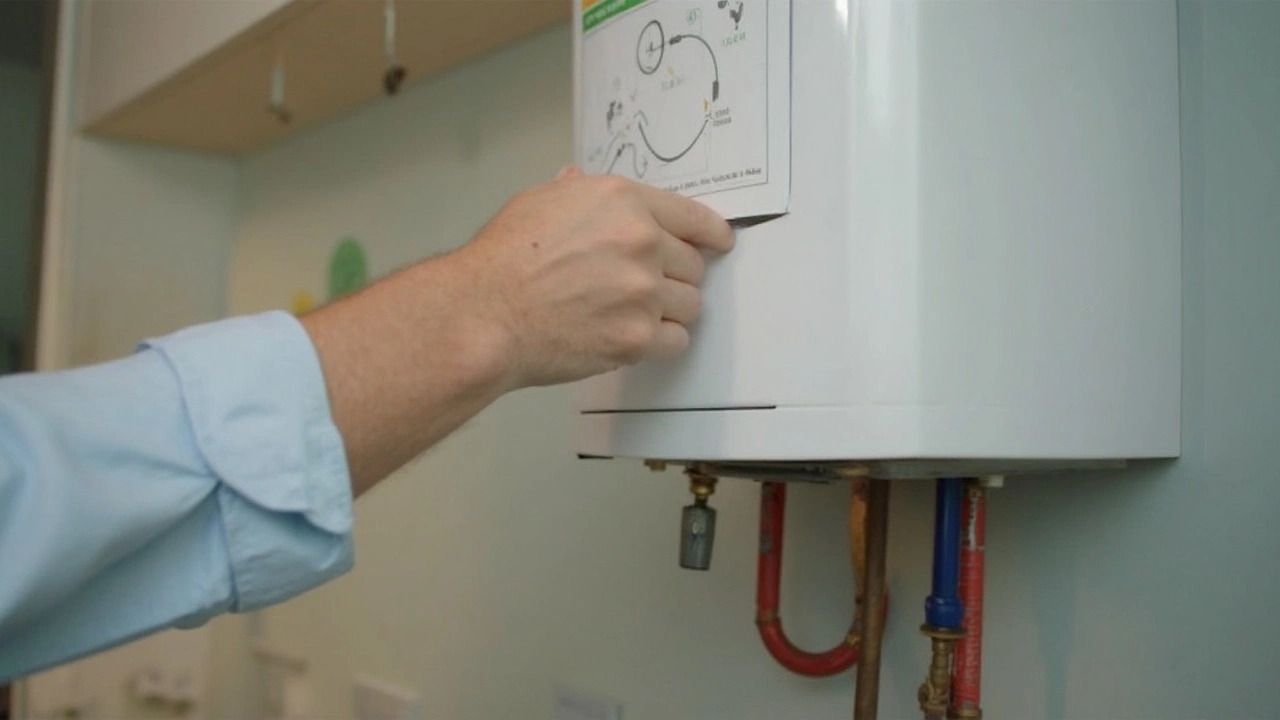
When the Problem Is the Water Heater
If you have no hot water coming out anywhere in the house, there’s a good chance your water heater itself is on strike. Don’t panic just yet—more than half the time, it’s a pretty basic issue you can sort out on your own. Start with the simplest stuff before calling in backup.
First things first: check if your water heater is getting power or gas. For electric models, look at the circuit breaker or fuse box. A tripped breaker or a blown fuse can kill your hot water in an instant. Gas heaters? Make sure the pilot light is burning. No flame, no heat—that’s the reality. If your heater has a reset button (most do), press it and listen for a click. Sometimes that alone brings the hot water back.
Next up, look at the thermostat. If it’s set too low, your "hot" water will feel lukewarm at best. The Department of Energy recommends around 120°F (49°C) for comfort and safety, so bump it back up if it slipped down. Don’t blast it higher—scalding risk is no joke.
- Electric Water Heaters: Make sure both upper and lower heating elements are working. If one goes, you’re left with chilly water.
- Gas Water Heaters: Listen for strange noises or check for water pooling at the bottom. Either issue means something more serious.
To get a sense of how big the problem is, here’s a quick comparison of common water heater failures:
| Issue | Signs | Quick Fix |
|---|---|---|
| Tripped Breaker | No power, totally cold water | Reset breaker |
| Pilot Out | No flame, gas heater not heating | Relight pilot, follow manual |
| Thermostat Too Low | Not hot enough | Adjust up to 120°F (49°C) |
| Faulty Element | Some hot water then cold | Replace element |
Hard water and sediment can also mess you up. When minerals build up inside the tank, your water heater has to work overtime. That’s why plumbers say draining the tank once a year can make a huge difference.
"Eighty-five percent of water heater failures come down to a handful of causes—don't overlook the basics," says the home safety pros at Family Handyman.
If you tried all these moves and still have cold showers, it might be time to call a pro. But honestly, a lot of water heater repair comes down to power, heat source, or a simple setting. Check these first, and you could save yourself some serious hassle and cash.
When to Call in the Pros
Sometimes, fixing no hot water in the shower isn’t a simple DIY job. There are clear situations when trying to troubleshoot more can waste time, or worse, cause damage or safety issues. Here’s when you should stop poking around and get a licensed plumber or an expert in water heater repair on the phone.
- Water heater is leaking: Any puddle or dripping is a bad sign. Leaks often mean there’s a tank or valve problem that needs pro tools and skills to fix. Delaying here risks major water damage.
- Pilot light won’t stay lit (gas units): If you’ve tried relighting the pilot multiple times and it keeps going out, that’s usually not a DIY fix. It could be a problem with the thermocouple or gas valve—both need a pro’s help for safety reasons.
- Breaker keeps tripping (electric heaters): Resetting a tripped breaker once is fine. If it keeps happening, there’s likely a wiring or heating element problem. Messing with electrical stuff without know-how can be dangerous.
- Rusty or smelly water: If the water is brown, yellow, or smells like rotten eggs, that’s usually a sign the tank’s inside is corroding, or there’s bacteria. Both require a trained tech to fix safely.
- Weird noises or banging: If the heater sounds like a popcorn machine or keeps rumbling, you probably have serious sediment buildup or even tank damage. This stuff gets worse fast and can shorten the water heater’s life big-time.
- No hot water anywhere in the house: If nothing works—not just the shower—then the water heater repair becomes more of a job for an expert.
Not sure how common these issues are? Here’s a quick look at the top reasons homeowners call plumbers for hot water problems:
| Reason for Call | Percent of Cases |
|---|---|
| Pilot won’t stay lit | 28% |
| Leaking tank | 21% |
| Electrical element failure | 18% |
| No hot water throughout house | 15% |
| Rusty smelly water | 10% |
| Other | 8% |
One more thing—if your water heater is over ten years old and keeps breaking down, weighing the cost of constant repair against getting a new unit just makes sense. Plumbers can spot those “it’s time” signs for you, so you don’t waste money.

